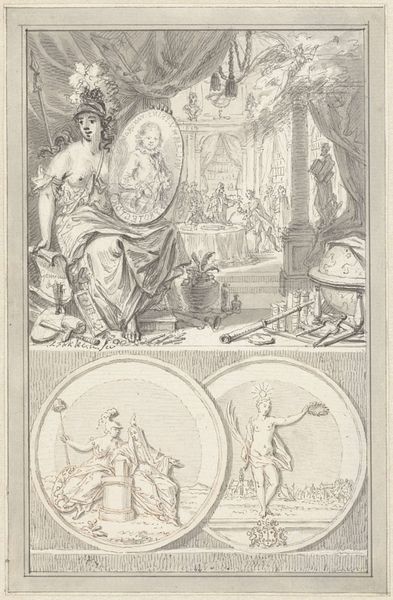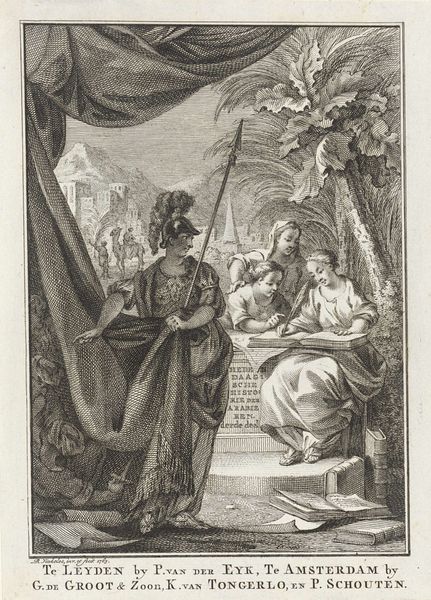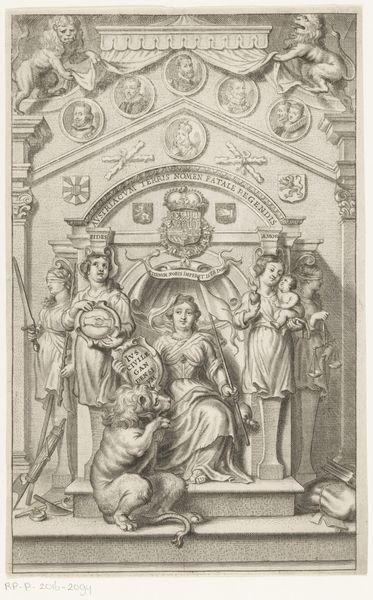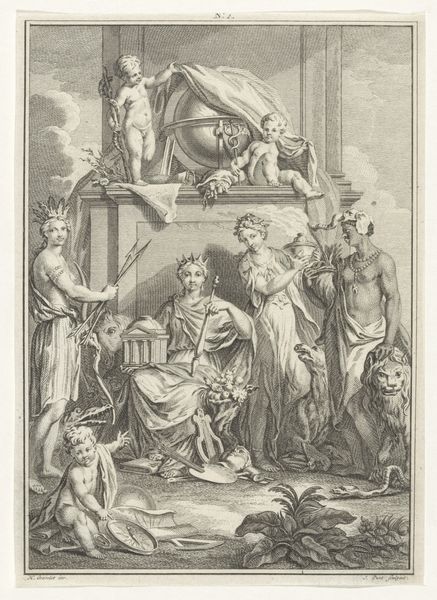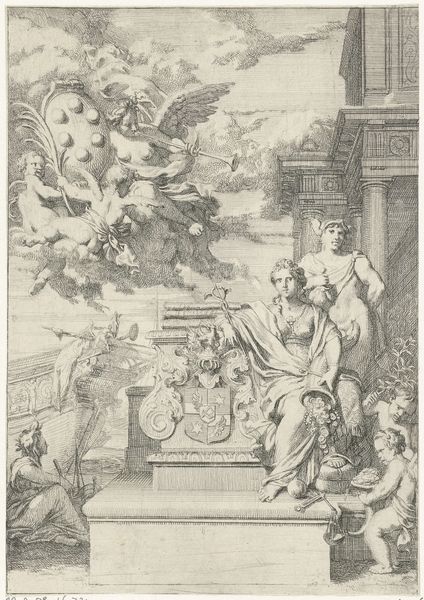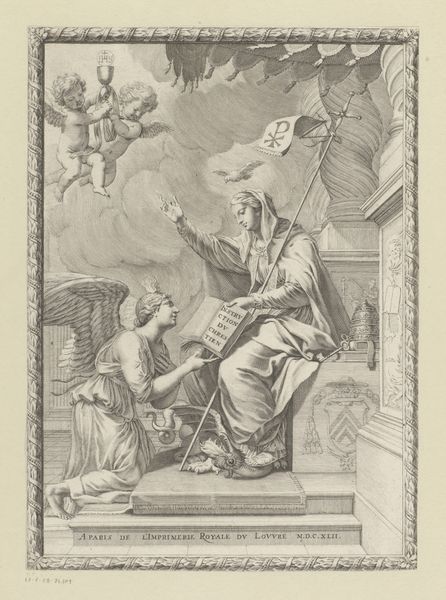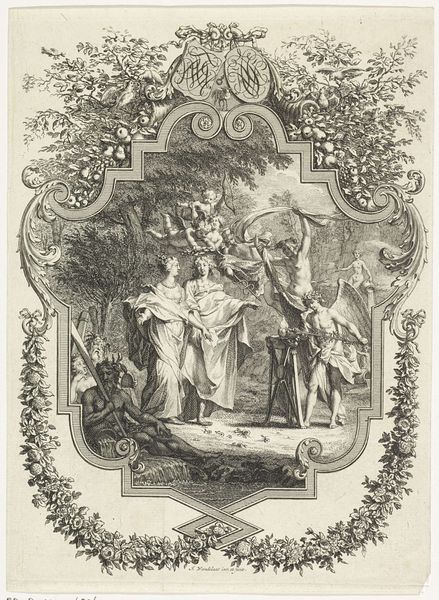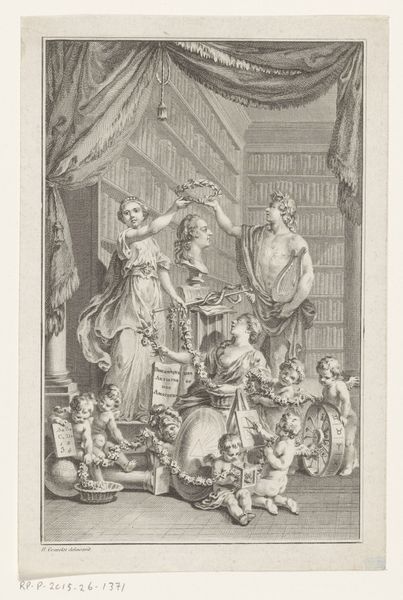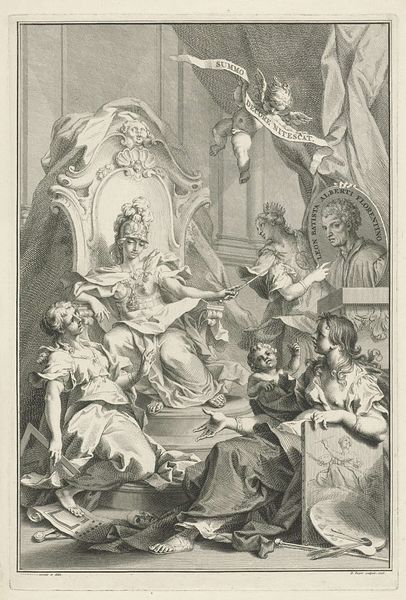
engraving
#
portrait
#
allegory
#
baroque
#
perspective
#
figuration
#
line
#
history-painting
#
engraving
Dimensions: height 289 mm, width 180 mm
Copyright: Rijks Museum: Open Domain
Editor: Here we have Jacob Folkema's engraving, "Stedenmaagd van Haarlem legt de eed af," from 1751, currently residing in the Rijksmuseum. The level of detail is incredible for an engraving. What strikes me is the almost theatrical staging. What's your take on this piece? Curator: This work is ripe with political and social commentary typical of the Baroque. The 'Stedenmaagd,' or the city maiden, embodies Haarlem itself, literally swearing an oath. The figures, though allegorical, participate in a crucial dialogue about power and civic duty. Notice the subjugated figure beneath her – a potent symbol of Haarlem’s dominance. Do you see any immediate parallels with contemporary socio-political issues? Editor: Well, the idea of representing a city as a female figure certainly evokes a conversation around gendered power dynamics. The maiden's oath seems very symbolic... What specific "handvesten" would she be referring to, do you think? Curator: The ‘handvesten’ were the city’s charters, documents that enshrined its rights and privileges. In that sense, the image can be read as the city itself reaffirming its autonomy against external powers. Moreover, consider the time this engraving was made. The Dutch Republic was grappling with internal divisions, so the imagery subtly reminds viewers of Haarlem's unique historical position and calls for renewed commitment to these founding principles. What is also revealing are the heraldic coats of arms and emblems of other civic figures from Haarlem adorning the periphery, forming a canonized, idealised group. Editor: That makes the piece even more layered! So, beyond its artistic merit, the work operates as a political statement, reflecting on Haarlem's sovereignty within a changing Republic. Curator: Precisely. It encourages a conversation on how cities shape and define their identities through representation. It provokes conversations about what charters could or should mean now in societies across the globe. Editor: I see this engraving now with fresh eyes. It’s a call to recognize how identity and place intersect with history. Curator: Exactly. By understanding these historical contexts, we can begin to engage in informed conversations about whose stories are being told—and whose are being excluded.
Comments
No comments
Be the first to comment and join the conversation on the ultimate creative platform.
